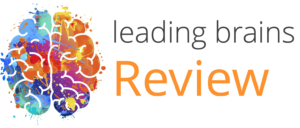 Many dog owners ascribe super powers to their four-legged friends but some of this is a case of over humanising or over ascribing intelligence to our canine companions. Sometimes they are pretty dumb and no they don’t, for example, feel guilt, but are pretty darn good at putting on the right expression to influence humans.
Many dog owners ascribe super powers to their four-legged friends but some of this is a case of over humanising or over ascribing intelligence to our canine companions. Sometimes they are pretty dumb and no they don’t, for example, feel guilt, but are pretty darn good at putting on the right expression to influence humans.
In fact, they seem to be better at reading the emotions of humans than humans are at reading their emotions.
But some recent research has shed some new light on the skills of dogs and how pets in general can reduce stress – if a healthy relationship exists, that is.
First off, a study recently published by Clara Wilson and colleagues of Queen’s University Belfast showed how dogs can smell stress. To do this the researchers recruited 36 human participants. They were then given a fast-paced arithmetic test with their heart rate and blood pressure tracked. They also self-reported their stress levels.
Breath and sweat samples were taken pre test and post test. These were then given to specially trained dogs to identify within three hours of the test. The dogs obviously had to be trained to identify the stressed sample – when we are stressed, we release multiple organic compounds, and this will be present in minute quantities in our breath and sweat.
The dogs could identify the stressed sample 93.75% of the time. Pretty impressive – there was a variation between dogs with accuracy ranging from 90% to 96.88%. What the dogs will do after this though is another question.
However, it seems that, according to other research that simply having a pet reduces stress. This ties in to what we know about pets and, for example, release of oxytocin, the bonding chemical.
Further research by Ece Beren Barklam of Kingston University in London showed how owning and spending time with pets during the pandemic increased wellbeing. But with some interesting twists.
What were these twists?
The study followed about 700 people in total with pet owners and non-pet owners filling out questionnaires. These also measured resilience and their relationship to their pets. Though most people consistently noted that their pets were sources of comfort, what the study showed is those who rated themselves as low on resilience had the largest positive impact from pets.
Therefore, it seems that pets are particularly helpful for those low on self-resilience. Surprisingly those who rated themselves high on resilience did not seem to reap the benefits of pet ownership.
What was also interesting is that those who had unhealthy relationships with their pets, i.e. rated their pets as their only source of comfort or who noted animals were better than people, showed decreased wellbeing and increased loneliness.
So, yes, your dog can smell your stress and will be source of comfort to you. This effect is largest for those who are less resilient but have a healthy relationship with their pets. Once your pet is actually your best, or only friend, you may need to find some human companions as well!

















